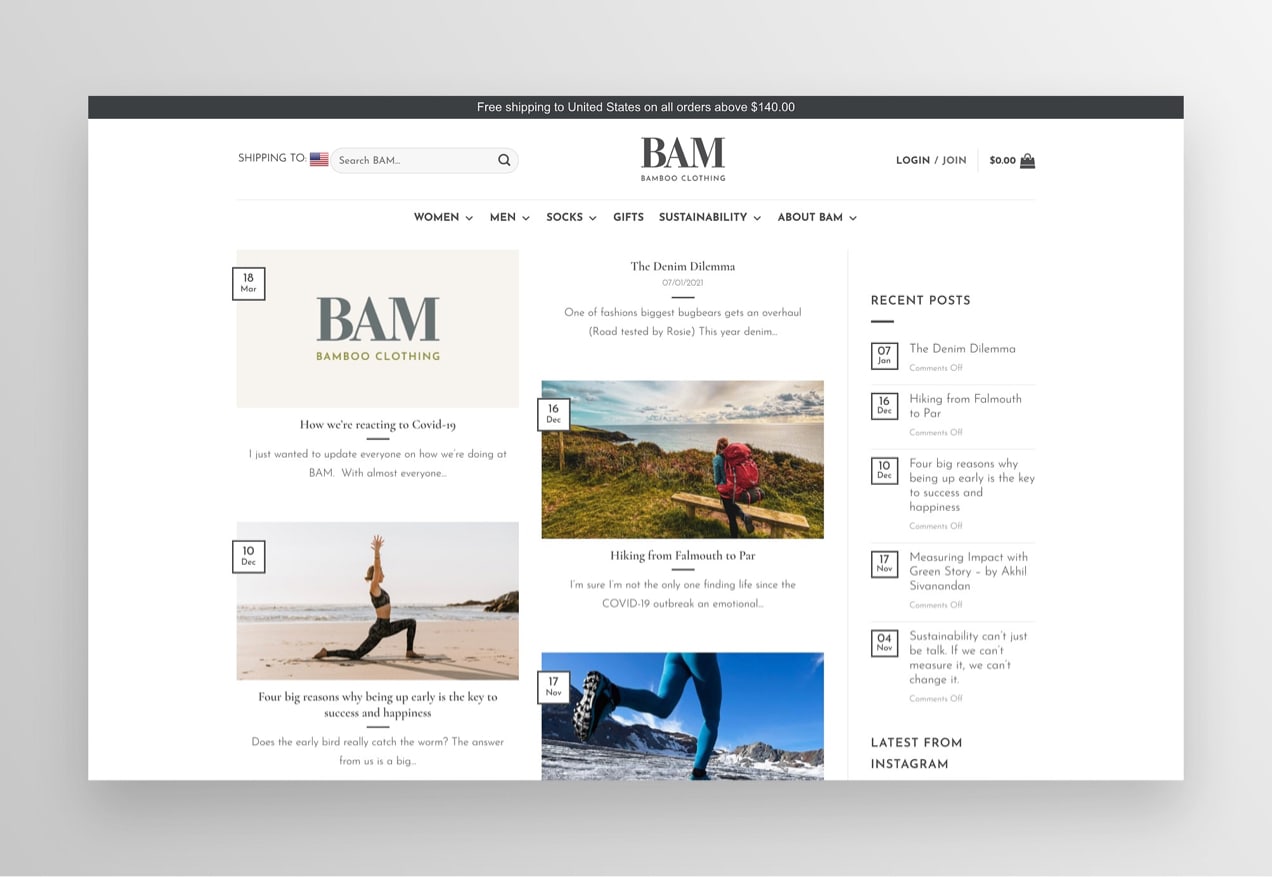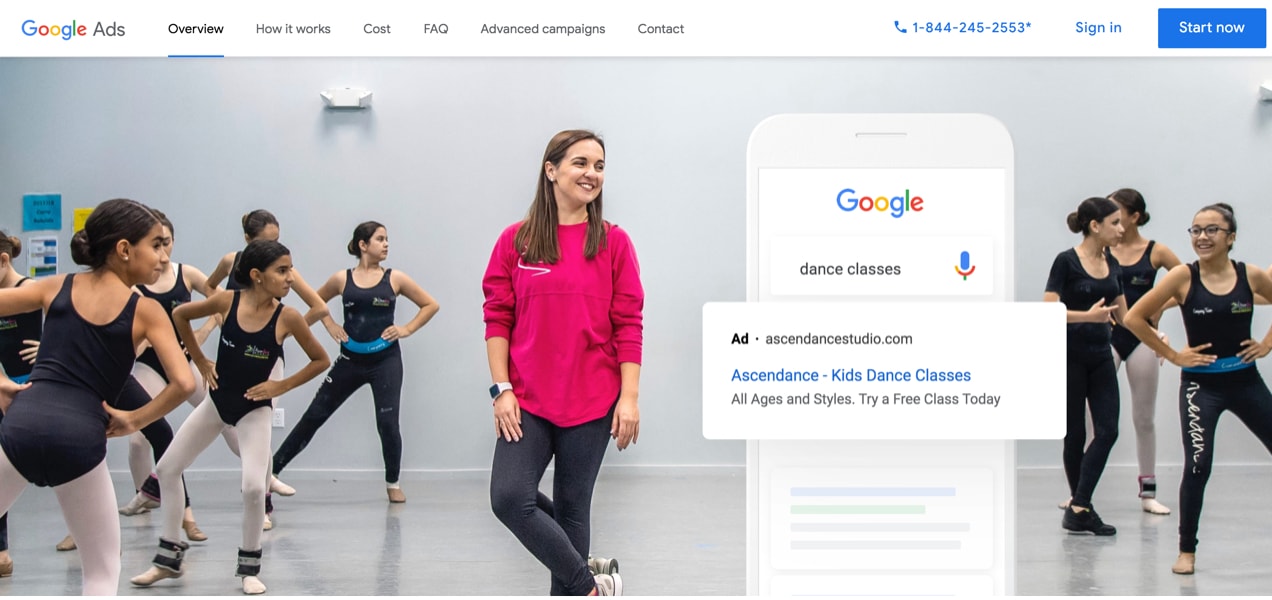If no one knows you exist, they can’t visit and buy something. If you don’t have a physical storefront, no one can drive by and see your sign. The only way to be found by your target audience is to drive traffic to your online store.
Here are three ways to accomplish this:
1. Organic search
↑ Torna in cimaAt some point, you may decide to pay for ads that bring traffic to your site. But if you can draw people to your online store without having to pay, all the better. Organic traffic is visitors who find you naturally through an online search platform, like Google. These are people who see your site in search results and choose to visit.
To make worthwhile progress with organic search, your site needs to show up on the first page of results. Between 71% and 92% of search traffic clicks go to sites that appear on the first page. And you can get there for search terms that relate to your business.
Here are three ways to increase your chances of showing up on page one:
Use content marketing
At its core, content marketing is about solving problems and answering questions. Figure out the problems and questions your audience needs help with, and then give solutions. Do it well, and you’ll draw traffic to your site.
For example, what kind of soil grows the best vegetables in my climate? What should I eat before and after a workout? What are the steps to publishing a book?

People search online for answers to questions like these all the time. The online stores and other sites that answer them are the ones earning traffic. If you operate an online gardening store and you aren’t answering questions related to gardening, you’re missing out on online traffic.
You can create content in the form of blog posts, how-to videos, case studies, and more. As long as you’re solving problems and answering questions that people are searching for, you will draw traffic. See three ways to grow your online business using content marketing.
Upgrade on-site optimization
Suppose you create a blog post about soil types that yield best in various climates. To increase your post’s authority and chances of showing up on page one, you need to include certain elements. At a minimum, you need:
- A good title for the post.
- A meta description for search results.
- A URL specific to your post.
- Alt text for your images.
If you’re hoping to rank for particular products, it may be a good idea to include the model number in your product title and in the image alt text. Any shoppers who know what they’re looking for will be led to your page.
But model number or not, your product page headline needs to clearly identify the product. If it’s a blog post or another type of content, ensure your headline identifies the problem you’re solving. “Best Soil Compositions for Different Climates” is a good title for our example.
Many pages have no headline at all, or one unrelated to the topic. Some sites just leave default titles like “Our Blog” as their title. Why is this a missed opportunity?
Because search engines like Google and Bing place great importance on headlines and the keywords they contain. This is a major component of on-page optimization. And the same holds true for the URL, page title, and meta description.
But this just scratches the surface of SEO. Find out more about everything we’ve discussed here in this SEO basics post from Jetpack or learn more with our advanced eCommerce SEO Guide.
Maintain a Google My Business page
For local businesses, this is a powerful way to draw optimized web traffic: people who are looking for whatever you sell.
Set up a Google My Business page, keep your hours accurate, make sure your phone number and URL are accurate, and update it with time-limited offers and special deals.
2. Paid search
↑ Torna in cimaIt’s true — you get what you pay for. If you want more traffic for your online store, you can pay for it.
While organic search efforts can take time to produce results, with Google Ads, Bing, or other paid search channels, you can instantly generate large volumes of quality traffic. Consider launching a monthly ad campaign that includes a fixed budget. Start small at $100 or $200 per month to get a feel for how to use the platform.

And don’t forget about specialized services like Google Shopping, which places photos of your products along with prices near the top of the search results page.
To use paid search well, here are a few tips:
- Develop ad campaigns for different goals. You might have one campaign that shows results for common questions and leads people to answers on your site. Another campaign could target searches for specific product names and lead visitors directly to your product pages.
- Always write multiple ads for each product — one generally outperforms the others.
- Monitor the data and adjust the ad copy to get more impressions and clicks.
- Include primary keywords in the ad title.
- Use other features within the platform like structured snippets, trackable phone numbers, and expanded text.
- Employ negative keywords to avoid paying for worthless traffic.
New to paid search? Use our guide on Google Ads for beginners.
3. Advertise on social media
↑ Torna in cimaNot everyone who comes to your site will be ready to buy. But by getting them into your sphere of influence, you can continue to reach out to them using email, re-marketing, and ongoing content marketing.
You can pay for ads on social media just like with paid search. The mechanics are different, and you must remember that people don’t usually go to social media looking for ads. So, you must position your social ads differently than you would in a paid search environment, where they’re explicitly linked to particular keywords.
But social media works very well for promoting your content marketing. Why? Because your audience still wants answers to their questions and problems. Post frequently, and make your posts relevant and helpful by linking them to your content. This is why social media combined with content marketing is a powerful combination for driving optimized traffic to your online store.
You can also pay to boost posts to people with interests your business serves, or who fit into your target demographics. Or help previous site visitors remember you by paying to ensure they see your content again and again.
You can also reach out to social media influencers who are appropriate for your niche. This is a form of referral marketing that operates on a much grander scale. Use this guide to influencer marketing to get started.
Put these three strategies to work for your online business, and you’ll see a steady increase in traffic! What’s next? Work on optimizing your product pages to increase conversions.
About



So very informative Article. Thanks Woo C
Thanks, Echenou!
Been using woocommerce for my clients website. Only thing i havent got my head around is google adwords but seo is a good challenge once you know what youre doing and see changes over time…but so many good plugins/products from woo commerce takes time to.learn them all…
Yeh . Show me one small website that ranks one two or three compared to guys with a hundred million backlinks and spending $50,000 a month on adwords. It’s near impossible to be one two or three with so much competition in today’s world is about a billion websites
You’re totally right that if you’re small or just starting out, it’s going to be difficult to beat a competitor who’s targeting the same terms and has a massive marketing budget.
You first want to be careful when you choose an audience to serve and consider finding a niche market that’s overlooked or unappreciated. This article can help you define your audience, or refine it if you’ve already started: https://woocommerce.com/posts/idea-to-first-ecommerce-customer-finding-an-audience/
Then, keyword research can be really helpful. I recommend you set both short- and long-term SEO goals. Even a small organization can rank for valuable terms if they put forth consistent effort. However, these might need to be terms with 1,000 searches per month instead of 50,000. Still, the eventual payoff here can be huge.
You might also use Google Search Console or Google Ads data (look for the “search terms report”) to identify terms that have pretty low traffic volume but a high conversion rate. Though it might not bring you thousands, or even hundreds, of new customers each month, ranking for these terms will probably be easier and could be your short term goal.
We have been working successfully with Woocommerce for many years. In the branch of high-quality active ingredient cosmetics, marketing is not easy and the competition is incredibly strong. No matter how good the products are, if you don’t regularly write optimized blog entries, you wait in vain for visitors.
Michael, great to hear you’ve found success with WooCommerce! You’re absolutely right: content marketing is a critical strategy. It bolsters SEO, social media, email marketing, online ads, and more.
Great ! Just in short I found my concept
Glad to hear it, Jakaria! Thanks for reading.
Bom dia.
Criei uma loja digital, não sei ainda os meios necessários para a divulgar, podem me ajudar?
Algum curso que possa fazer?
Obrigada
Like you mentioned, great content is the first step but getting people to your website is the real challenge. For people that are just starting out, I’ve found that it’s helpful to try and reach out to other popular websites, in your niche, to try and get them to link or share your content if it fits their target audience. This strategy gets the ball rolling!
Angesagt
A beginner’s guide to ecommerce SEO
By Kevin Bates •
How Landyachtz cut ecommerce costs by more than 75% and gained full control with WooCommerce
By Mahrie Boyle •
Prepare your business for 2026 EU tax changes
By Lynn J •
Never miss a beat — join our mailing list
Please enter a valid email.
View our privacy policy. You can unsubscribe anytime.
There was an error subscribing; please try again later.
Thanks for subscribing!
Emails will be sent to
You're already subscribed!
Emails are sent to